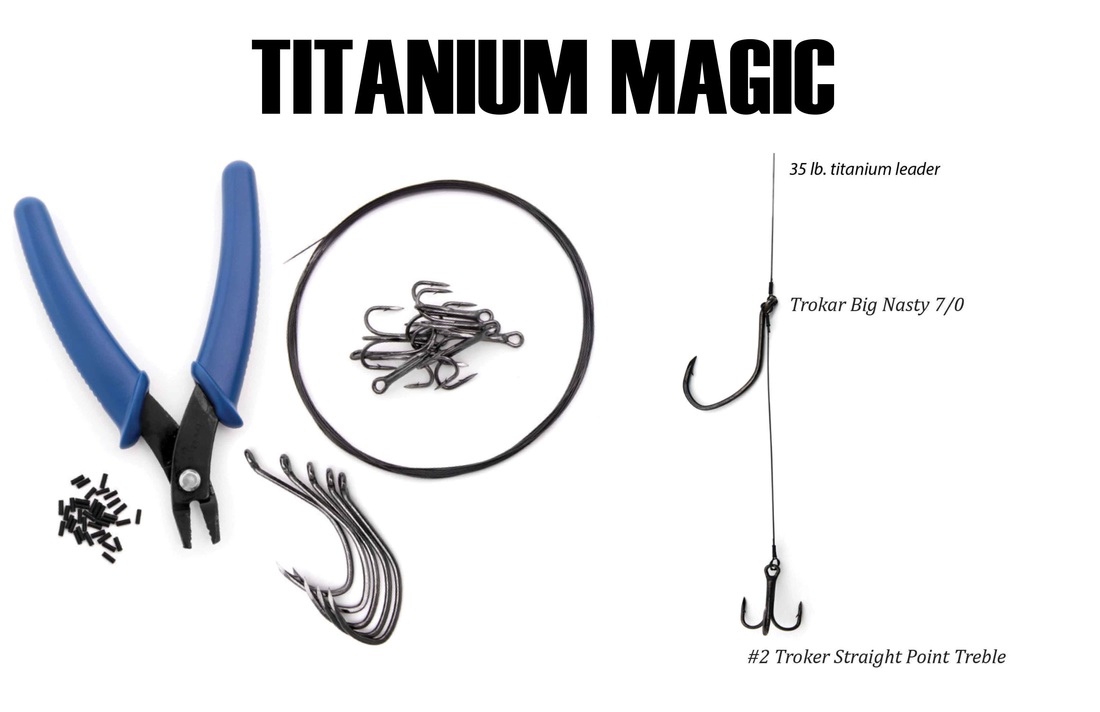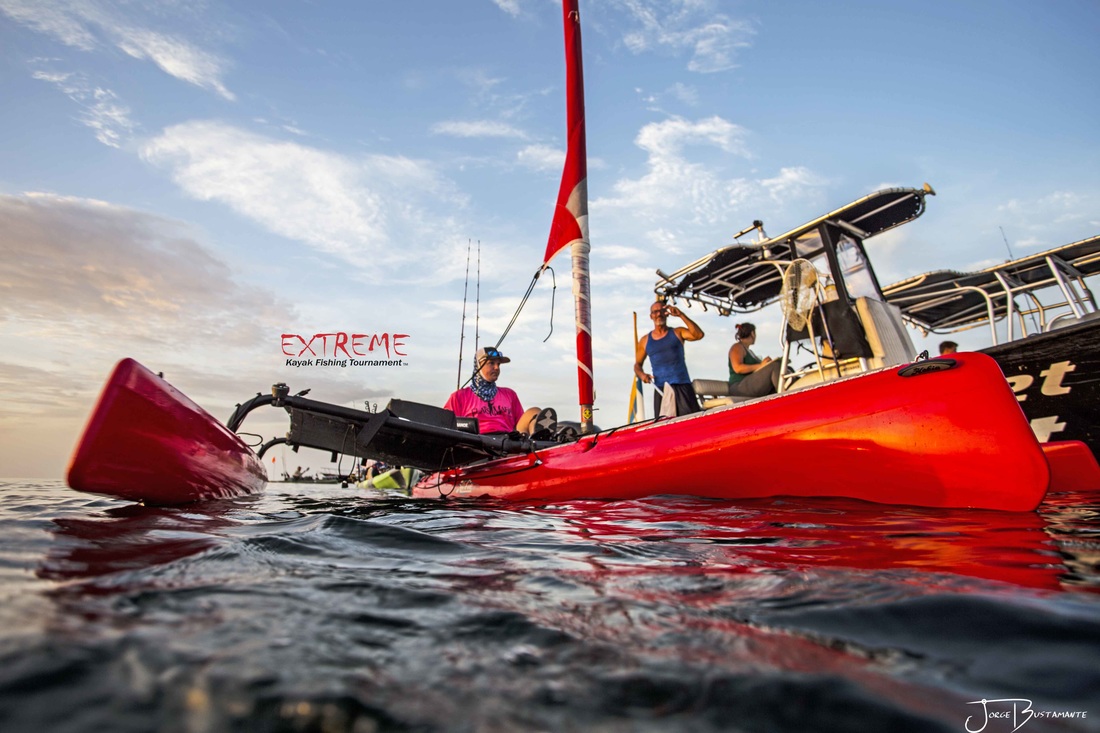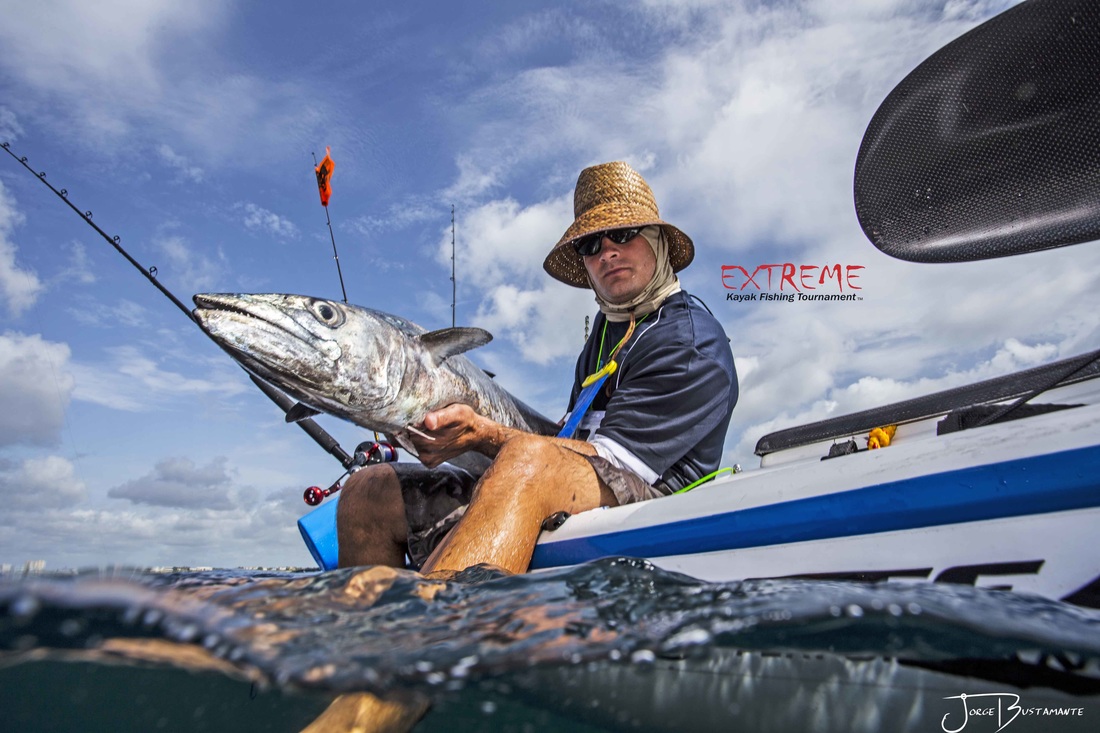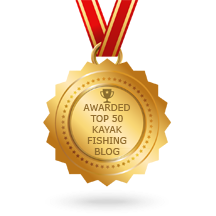SNAKES TO SMOKERS
High Tech Components Equal Solid Connections
Captain Mike Genoun
I admit it. I’m the type who likes to tinker. Regardless of species or technique, I’m always experimenting and always trying to perfect my approach. Sometimes I’m successful, sometimes not so much. My latest quest has been an attempt to perfect the ultimate king mackerel stinger rig.
The most popular game fish in Florida, king mackerel are regularly taken around the entire state by anglers of all ages and skill levels. While there are heavy runs in the spring and fall, these eating machines may crush a bait 365 days a year! Kings are regularly fooled on trolled strip baits, artificial plugs and naked ballyhoo. They can also be slow trolled with the use of downriggers and planers, yet for kayakers it’s really a game of live bait. Truth is, these migratory eating machines can be caught on a wide variety of natural and artificial offerings using an array of tactics and techniques. This versatility is what makes this prolific predator so popular, not to mention drag sizzling runs and for providing the key ingredient for world famous smoked fish dip.
From 5-pound snakes to 50-pound smokers, one thing all king mackerel have in common is a set of razor sharp dentures. This means wire leader is a must to prevent frustrating cut offs. Commercial king-fishermen are known to fish triple hook sardine rigs tied directly to 80 lb. monofilament, but this is the exception in clear water with spooky fish.
When I began king mackerel fishing longer ago than I care to remember, I tied rigs using #6 (61 lb.) single strand wire exclusively. It worked, but after years of trial and error, landing countless kings and losing my fair share along the way, I’ve now reduced my terminal signature to 35 lb. titanium leader. American Fishing Wire, Malin, Knot 2 Kinky and Terminator all produce quality titanium products. This advanced material is much more supple and allows live bait much greater mobility than stiffer single strand. This means your pilchard, goggle eye or runner doesn’t have to work as hard and remains stronger for longer. Additionally, titanium is nearly indestructible. You can stretch it…twist it…turn it…and catch multiple fish on the same rig, just don’t kink it; a sharp bend is titanium leader’s only weakness.
Additionally, pound for pound titanium leader is substantially thinner than single strand wire, which equates to a stealthier approach. What else you need to know about titanium leader is that it retails for approximately $1.00/foot and that the series of knots commonly used with single strand wire will not work, so forget about a simple haywire twist. Titanium has completely different characteristics. Your only options are either an untidy clinch knot, or a tiny crimped connection. I prefer the latter for a much cleaner, streamlined presentation. While tiny #1 sleeves are perfect when working with 35 lb. titanium, you will need a scaled down crimping tool to achieve a reliable connection. Look for micro crimpers at local arts & crafts stores.
You should also know that your crimped connection would potentially fail if you simply thread the titanium wire through the sleeve, through the eye of the hook or swivel, and back up into the sleeve. Instead, create a tiny loop on the hook or swivel eye be weaving the titanium wire into its own circle two additional times. This takes time and will hurt your fingertips, but when done properly it is a reliable connection you can count on.
When rigging for kings, I start with six feet of double line created with a Bimini twist, connected to six feet of 40 lb. test fluorocarbon via a small, streamlined Albright knot. The tag end of the 40 lb. fluorocarbon is where the completed stinger rig will ultimately be attached via a tiny power swivel. Length of titanium leader from the swivel to the J hook is debatable. I prefer 24-inches, but remember that determined smokers characteristically charge bait at lightning fast speed and no matter how long your wire, the occasional cut off is unavoidable.
Selecting the proper hook is the next part of the equation with nearly as many options as there are anglers. While I continue to have success with a variety of hooks from various manufacturers, I’m currently experimenting with Eagle Claw’s latest innovation; the surgically sharpened Trokar Big Nasty. The 7/0 is perfect for big goggle eye and blue runners. Not only are Trokar Big Nasty hooks stupid sharp, the hook features a welded eye that prevents the ultra thin titanium from slipping. Equally important, these innovative forged works of fish-catching art are incredibly strong for their thin diameter. The hook is also slightly offset with a unique shape in the bend, which I am convinced facilitates a quicker hook set and a nearly escape-proof connection. Combined, these important features all add up to one incredibly impressive hook!
My stinger hook on this rig, positioned six to eight inches behind the J-hook is a #2 Trokar Straight Point treble. Again, Trokar Straight Point trebles are ridiculously sharp. As a kingfish races in for the kill, the savage often slices its targeted meal in half. It is this small treble implanted in the back half of the bait that often makes the connection. Hence, it is important to note that anything less than a 4X treble and you risk hook failure when applying maximum heat on a big fish.
While we all know there are no guarantees in fishing, the proper rig in any application will certainly increase your odds for a rewarding experience. Regardless, you must remember to focus your efforts in areas likely to hold forage and the game fish you seek. It is this basic fundamental that is the very first step toward achieving consistent success. Tight lines and looking forward to seeing you on the water!
Step 1: Start by prepping all materials.
Step 2: Crimp a tiny 50 lb. power swivel to one end of 24 in. titanium leader.
Step 3: Crimp opposite end to 7/0 Trokar Big Nasty.
Step 4: Crimp one end of 8 in. titanium leader to eye of same 7/0 hook.
Step 5: Crimp #2 Trokar Straight Point treble to opposite end of wire trace.
Step 6: Kill a super smoker and win the kayak tournament!
BY Captain Mike Genoun
High Tech Components Equal Solid Connections
Captain Mike Genoun
I admit it. I’m the type who likes to tinker. Regardless of species or technique, I’m always experimenting and always trying to perfect my approach. Sometimes I’m successful, sometimes not so much. My latest quest has been an attempt to perfect the ultimate king mackerel stinger rig.
The most popular game fish in Florida, king mackerel are regularly taken around the entire state by anglers of all ages and skill levels. While there are heavy runs in the spring and fall, these eating machines may crush a bait 365 days a year! Kings are regularly fooled on trolled strip baits, artificial plugs and naked ballyhoo. They can also be slow trolled with the use of downriggers and planers, yet for kayakers it’s really a game of live bait. Truth is, these migratory eating machines can be caught on a wide variety of natural and artificial offerings using an array of tactics and techniques. This versatility is what makes this prolific predator so popular, not to mention drag sizzling runs and for providing the key ingredient for world famous smoked fish dip.
From 5-pound snakes to 50-pound smokers, one thing all king mackerel have in common is a set of razor sharp dentures. This means wire leader is a must to prevent frustrating cut offs. Commercial king-fishermen are known to fish triple hook sardine rigs tied directly to 80 lb. monofilament, but this is the exception in clear water with spooky fish.
When I began king mackerel fishing longer ago than I care to remember, I tied rigs using #6 (61 lb.) single strand wire exclusively. It worked, but after years of trial and error, landing countless kings and losing my fair share along the way, I’ve now reduced my terminal signature to 35 lb. titanium leader. American Fishing Wire, Malin, Knot 2 Kinky and Terminator all produce quality titanium products. This advanced material is much more supple and allows live bait much greater mobility than stiffer single strand. This means your pilchard, goggle eye or runner doesn’t have to work as hard and remains stronger for longer. Additionally, titanium is nearly indestructible. You can stretch it…twist it…turn it…and catch multiple fish on the same rig, just don’t kink it; a sharp bend is titanium leader’s only weakness.
Additionally, pound for pound titanium leader is substantially thinner than single strand wire, which equates to a stealthier approach. What else you need to know about titanium leader is that it retails for approximately $1.00/foot and that the series of knots commonly used with single strand wire will not work, so forget about a simple haywire twist. Titanium has completely different characteristics. Your only options are either an untidy clinch knot, or a tiny crimped connection. I prefer the latter for a much cleaner, streamlined presentation. While tiny #1 sleeves are perfect when working with 35 lb. titanium, you will need a scaled down crimping tool to achieve a reliable connection. Look for micro crimpers at local arts & crafts stores.
You should also know that your crimped connection would potentially fail if you simply thread the titanium wire through the sleeve, through the eye of the hook or swivel, and back up into the sleeve. Instead, create a tiny loop on the hook or swivel eye be weaving the titanium wire into its own circle two additional times. This takes time and will hurt your fingertips, but when done properly it is a reliable connection you can count on.
When rigging for kings, I start with six feet of double line created with a Bimini twist, connected to six feet of 40 lb. test fluorocarbon via a small, streamlined Albright knot. The tag end of the 40 lb. fluorocarbon is where the completed stinger rig will ultimately be attached via a tiny power swivel. Length of titanium leader from the swivel to the J hook is debatable. I prefer 24-inches, but remember that determined smokers characteristically charge bait at lightning fast speed and no matter how long your wire, the occasional cut off is unavoidable.
Selecting the proper hook is the next part of the equation with nearly as many options as there are anglers. While I continue to have success with a variety of hooks from various manufacturers, I’m currently experimenting with Eagle Claw’s latest innovation; the surgically sharpened Trokar Big Nasty. The 7/0 is perfect for big goggle eye and blue runners. Not only are Trokar Big Nasty hooks stupid sharp, the hook features a welded eye that prevents the ultra thin titanium from slipping. Equally important, these innovative forged works of fish-catching art are incredibly strong for their thin diameter. The hook is also slightly offset with a unique shape in the bend, which I am convinced facilitates a quicker hook set and a nearly escape-proof connection. Combined, these important features all add up to one incredibly impressive hook!
My stinger hook on this rig, positioned six to eight inches behind the J-hook is a #2 Trokar Straight Point treble. Again, Trokar Straight Point trebles are ridiculously sharp. As a kingfish races in for the kill, the savage often slices its targeted meal in half. It is this small treble implanted in the back half of the bait that often makes the connection. Hence, it is important to note that anything less than a 4X treble and you risk hook failure when applying maximum heat on a big fish.
While we all know there are no guarantees in fishing, the proper rig in any application will certainly increase your odds for a rewarding experience. Regardless, you must remember to focus your efforts in areas likely to hold forage and the game fish you seek. It is this basic fundamental that is the very first step toward achieving consistent success. Tight lines and looking forward to seeing you on the water!
Step 1: Start by prepping all materials.
Step 2: Crimp a tiny 50 lb. power swivel to one end of 24 in. titanium leader.
Step 3: Crimp opposite end to 7/0 Trokar Big Nasty.
Step 4: Crimp one end of 8 in. titanium leader to eye of same 7/0 hook.
Step 5: Crimp #2 Trokar Straight Point treble to opposite end of wire trace.
Step 6: Kill a super smoker and win the kayak tournament!
BY Captain Mike Genoun





 RSS Feed
RSS Feed